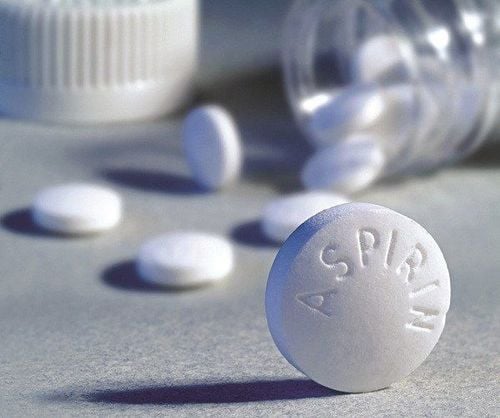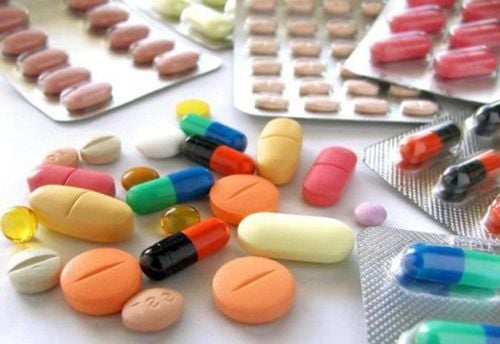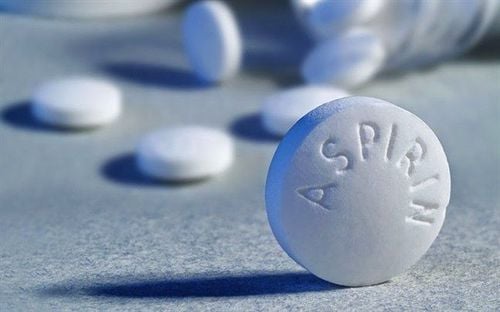This is an automatically translated article.
Rosufar contains the active ingredient Rosuvastatin and is sold under the brand name Crestor, which belongs to the statin drug class. It is used to prevent cardiovascular disease in people at high risk and to treat abnormal lipid levels.1. What are the effects of Rosufar?
Rosufar 10 has the main ingredient Rosuvastatin with a concentration of 10mg/tablet. Rosufar is a statin drug that is used to reduce the risk of cardiovascular disease and manage high lipid levels by inhibiting endogenous production of cholesterol in the liver.
The drug is indicated for use in the following cases:
Rosuvastatin is an HMG-CoA reductase inhibitor used to treat dyslipidemia and reduce the risk of cardiovascular disease including myocardial infarction and stroke Used for hypercholesterolemia, hyperlipidemia, mixed dyslipidemia, primary dyslipidemia, hypertriglyceridemia and prevention of cardiovascular disease Support for the treatment of cardiovascular-related diseases such as: Hypertension, primary hypertension, primary hypercholesterolemia, postoperative thromboembolism Contraindicated in the following cases:
Do not use in patients with allergic reactions or hypersensitivity reactions with the ingredient Rosuvastatin. Do not use in patients with developing liver disease including persistent elevation of serum transaminases of unknown cause. Do not use in patients with severe renal impairment. Patients who are taking cyclosporin should not take Rosufar to treat the disease.
2. Dosage and usage
2.1. How to take The drug is produced in capsules or tablets and administered orally. Patients can take the pill while eating or after eating, when taking the tablet, it should be swallowed whole, not crushed or chewed.
Use Rosufar regularly to get the best effect. Ideally, the patient should take the medicine at the same time each day. It is necessary to use the correct dose of medicine, with the duration of treatment prescribed by the doctor, even if the condition has improved.
2.2. Dosage At the beginning of treatment, use 5 or 10 mg, once a day. In case of need, patients can adjust the dose of the drug every 4 weeks. Patients only use 40mg dose when experiencing severe hypercholesterolemia at high risk of cardiovascular disease that treatment at 20mg dose is not effective.
In patients with renal impairment, if the creatinine clearance is greater than or equal to 30 ml/min, no dosage adjustment is necessary, but the usual patient dose is used.
In patients with a history of liver disease, kidney failure, hypothyroidism, personal or family history of hereditary muscle diseases, alcoholics, and people over 70 years of age, when taking medication to treat the disease, they are prone to this condition. like rhabdomyolysis.
Currently, for cases of drug overdose, there is no specific treatment. When the drug overdose, the patient will be prescribed treatment according to the symptoms encountered and apply supportive measures when necessary. It is advisable to monitor liver function and CK levels (CK levels help to reflect the functioning and health of muscle mass) regularly.
3. Side effects
Common side effects during treatment with Rosufar include the following symptoms:
Side effects cause nervous system disorders with headache, dizziness. Side effects cause digestive system disorders such as constipation, vomiting, nausea, abdominal pain. Side effects include musculoskeletal, connective tissue and bone disorders such as myalgia. Arguably this is the most common side effect of rosuvastatin. If the patient has mild to moderate muscle symptoms, the drug should be discontinued to evaluate for other causes of myalgia. If the underlying cause has been resolved, the patient may be restarted with the original or a lower dose of rosuvastatin. However, if symptoms recur a second time, the patient should stop taking rosuvastatin and seek other more suitable treatment. Generalized disorder with the most common symptom being asthenia. Renal effects: Proteinuria Other uncommon reactions such as: pruritus, rash and urticaria Musculoskeletal system effects: Myalgia and myopathy reactions are uncomplicated and some patients present with diarrhea rhabdomyolysis due to impaired renal function. Elevated CK concentrations may be observed in a small number of patients receiving rosuvastatin. However, the majority of cases experienced mild, asymptomatic and transient reactions. Hepatic effects: As with other HMG-CoA reductase inhibitors, the use of Rosufar may increase transaminases.
4. Caution
To avoid an allergic reaction to the drug, the patient should inform the doctor if there is a history of unusual or allergic reaction to Rosufar or any other medicine.
Use caution with children, especially children under 10 years old.
For the elderly who need regular health monitoring during drug treatment
5. Drug interactions
Drug interactions can change the effectiveness of the drug or increase the side effects. affect patient health. Here are some drugs when used with Rosufar that can cause drug interactions that patients need to be aware of. However, this list is not exhaustive, so patients need to inform their doctor about all the medicines they are taking including supplements, prescription or non-prescription drugs.
The following drugs may enhance the myopathogenic effect of rosuvastatin: acipimox, bezafibrate, ciprofibrate, colchicine, daptomycin, fenofibrate, fusidic acid, gemfibrozil, niacin, niacinamide, raltegravir, rupatadine. The following drugs may decrease the serum concentration of rosuvastatin: antacids, apalutamide, elagolix, eslicarbazepine. The following drugs may increase the serum concentration of rosuvastatin: asunaprevir, clopidogrel, cobicistat, cyclosporine, daclatasvir, dasabuvir, dronedarone, elbasvir, eltrombopag, eluxadoline, fostamatinib, glecaprevir, pibreermoasvir, oretasparivir, , osimertinib, protease inhibitors, simeprevir, teriflunomide, velpatasvir, voxilaprevir Antacids containing aluminum or magnesium may decrease the absorption of Rosufar. Therefore, when it is necessary to take these two drugs together, the patient should take the antacid at least 2 hours after taking Rosufar. The risk of muscle-related diseases during treatment with rosuvastatin may be increased by concomitant use of certain other lipid-lowering therapies such as fenofibrate or niacin, gemfibrozil, simeprevir, cyclosporin, atazanavir (ritonavir), lopinavir. Acetohexamide: The therapeutic efficacy of Acetohexamide may be increased when used in combination with Rosuvastatin Acyclovir: The excretion of Rosuvastatin may be decreased when combined with Acyclovir Alendronic acid: Risk or severity of myopathy, Rhabdomyolysis and myoglobinuria may be increased when alendronic acid is combined with rosuvastatin. Almasilate: Almasilate may cause decreased absorption of Rosuvastatin resulting in decreased serum concentrations and potentially decreased efficacy.













